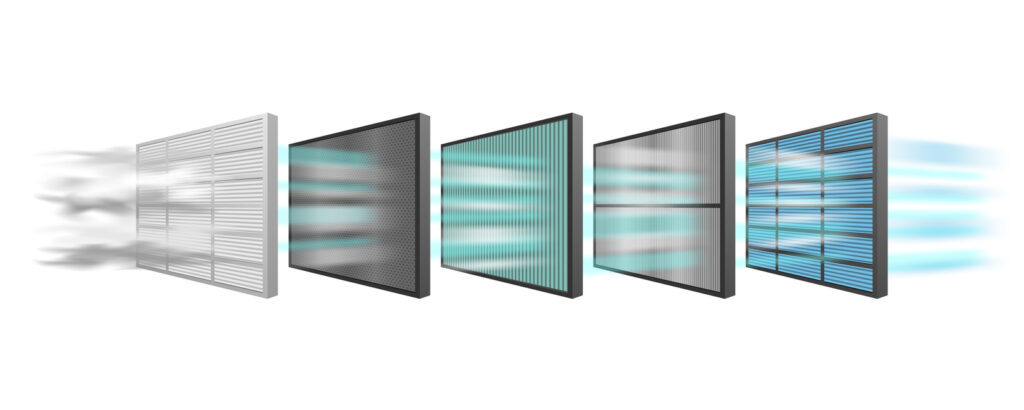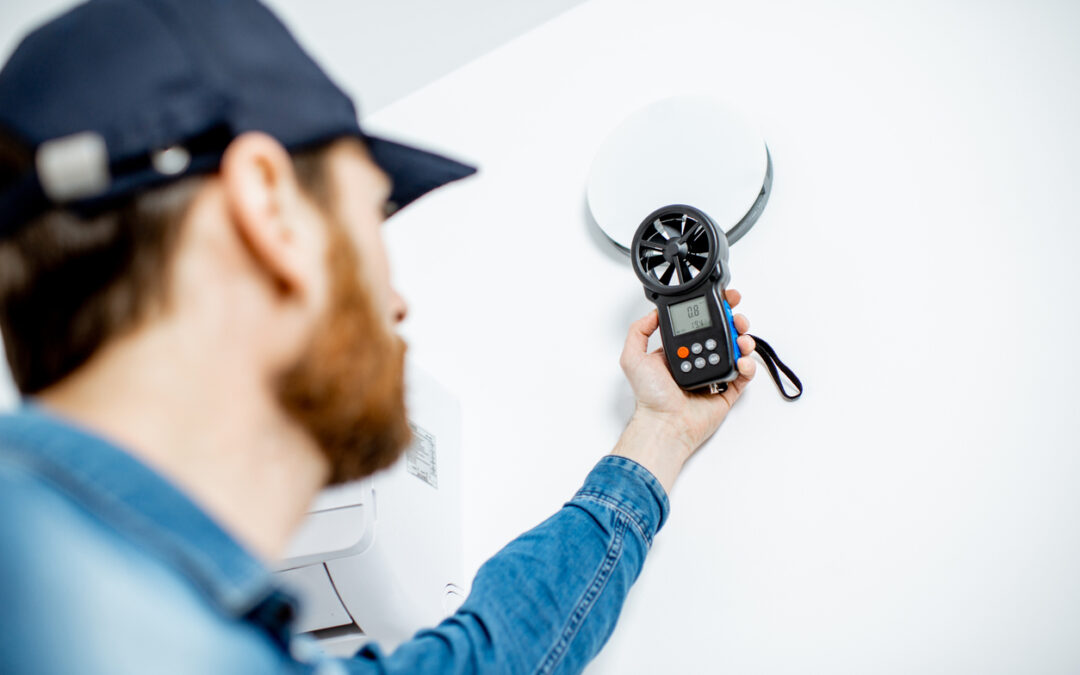Remember when “fresh air” meant opening a window? Indoor Air Quality (IAQ) isn’t just a buzzword—it’s a lifeline for the buildings of the future. The COVID-19 pandemic turned air quality from a niche concern into a major priority for building owners, facility managers, and employees alike. What was once considered a specialized issue is now front and center in discussions about health, productivity, and sustainability.
The connection between IAQ and how we feel is clear. Poor air quality contributes to respiratory issues, cognitive decline, and reduced workplace performance. Meanwhile, smart building technology has evolved significantly. With AI-driven ventilation, real-time sensors, and advanced filtration technology, commercial buildings are undergoing a transformation where clean air matters as much as energy efficiency.
Hate to read? Listen to a podcast episode on this topic. Visit the NOXTalks Podcast for more episodes

Why IAQ Matters More Than Ever
The air inside buildings is often more polluted than outdoor air, thanks to a combination of poor ventilation, airborne pathogens, and chemical contaminants. This indoor air affects us in ways ranging from minor irritations to serious long-term conditions.
A Harvard study found that workers in well-ventilated spaces with low CO₂ performed 61% better on cognitive tests than their counterparts in conventional offices. Translation: better air makes you more productive. Similarly, schools that improved their IAQ saw fewer student absences and better test scores.
Beyond health concerns, good air makes financial sense too. Healthier buildings translate to fewer sick days, higher worker productivity, and increased tenant satisfaction. In commercial real estate, buildings with superior IAQ are becoming more attractive to tenants, giving property owners a competitive edge.

Innovations in IAQ Technology
The next generation of IAQ solutions is smarter, more data-driven, and seamlessly integrated into modern building management systems.
AI-Driven Ventilation Systems
These intelligent systems adjust airflow based on real-time occupancy levels, outdoor air quality, and pollution detection. They ensure fresh air is supplied efficiently without wasting energy.
- Reality check: Smart demand-controlled ventilation can cut energy use by 20-30% while maintaining optimal air quality.
Smart Sensors for Monitoring Air Quality
Today’s advanced sensors track pollutants, temperature, humidity, and CO₂ levels in real-time, feeding data to building systems that respond automatically. When carbon dioxide levels rise during meetings, the system increases airflow accordingly.
- Tech advantage: IoT-enabled sensors provide facility managers with comprehensive air quality dashboards for granular control.
Advanced Filtration and Air Purification
From HEPA filters to UV-C light purification, new technologies actively remove contaminants and neutralize pathogens. Some systems use electrostatic filters that attract particles without restricting airflow.
- Innovation highlight: Needlepoint bipolar ionization technology breaks down pollutants at the molecular level, enhancing IAQ without excessive energy consumption.
Sustainability and IAQ: Finding Synergy
The traditional concern about improving IAQ was the potential energy cost. However, the latest smart ventilation systems are proving you can have clean air and energy efficiency simultaneously.
AI-driven systems provide fresh air when needed and scale back when spaces are unoccupied. This approach keeps air quality at safe levels without unnecessary energy consumption.
IAQ is also becoming integral to decarbonization strategies. High-performance air purification reduces the need for energy-intensive ventilation, and smart management aligns with building certifications like WELL, LEED, and RESET Air. Facility managers pursuing ESG goals are recognizing that IAQ isn’t just about health—it’s also a critical component of sustainable building design.

Case Studies: IAQ in Action
Google’s Healthy Buildings Initiative
Tech giant Google has embraced smart IAQ management across its office spaces. Employees can check air quality in real-time, which has led to 30% lower CO₂ levels, fewer complaints about fatigue and headaches, and 25% energy savings compared to conventional ventilation strategies.
California Schools and IAQ Improvements
A study of California elementary schools found that better ventilation led to a significant reduction in student absences. If all classrooms in the state met ventilation standards, absences could drop by 3.4%, saving schools millions in attendance-linked funding.
Air Quality and Academic Performance
After a gas leak near Los Angeles schools, air filters were installed as a precaution. The results showed noticeable improvement in reading and math scores, especially in disadvantaged communities where pollution levels are typically higher, suggesting that air quality improvements can have a direct effect on cognitive performance.
Conclusion
The future of buildings isn’t just smart—it’s healthy. With advanced sensors, AI-powered ventilation, and high-efficiency filtration, modern buildings can provide clean air without sacrificing energy efficiency.
As IAQ technology evolves, it will continue creating healthier workplaces, boosting productivity, and helping meet sustainability goals. Facility managers who embrace these innovations aren’t just making their buildings smarter—they’re making them better places to work and live.
And isn’t that a breath of fresh air?
Sources
Allen, J. G., MacNaughton, P., Satish, U., Santanam, S., Vallarino, J., & Spengler, J. D. (2016). Associations of Cognitive Function Scores with Carbon Dioxide, Ventilation, and Volatile Organic Compound Exposures in Office Workers: A Controlled Exposure Study of Green and Conventional Office Environments. Environmental Health Perspectives, 124(6), 805-812. https://doi.org/10.1289/ehp.1510037
Mendell, M. J., Eliseeva, E. A., Davies, M. M., Spears, M., Lobscheid, A., Fisk, W. J., & Apte, M. G. (2013). Association of classroom ventilation with reduced illness absence: A prospective study in California elementary schools. Indoor Air, 23(6), 515-528. https://pmc.ncbi.nlm.nih.gov/articles/PMC7165692/
O’Neill, Z., & Zheng, X. (2019). Energy savings and ventilation performance from CO₂-based demand controlled ventilation: Simulation results from ASHRAE RP-1747. Science and Technology for the Built Environment, 25(3), 302-316. https://www.tandfonline.com/doi/full/10.1080/23744731.2019.1620575
Sawchuk, S. (2020, February 4). Air filters: A potential tool to boost learning? Education Week. https://www.edweek.org/leadership/air-filters-a-potential-tool-to-boost-learning/2020/02
Zhong, H., Tan, Z., Yan, J., Zhai, P., & Ma, H. (2019). Artificial intelligence in building energy efficiency: A review. International Journal of Environmental Research and Public Health, 16(5), 7582. https://pmc.ncbi.nlm.nih.gov/articles/PMC6427582/

